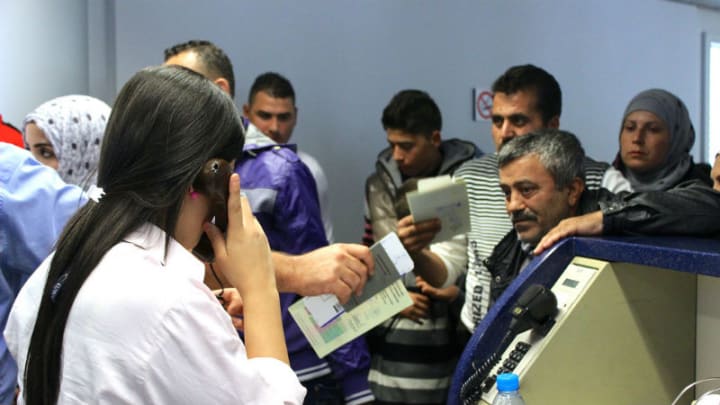
LONDON — A slight decrease in global levels of official development assistance in 2017 was caused by a drop in in-donor refugee spending, the Development Assistance Committee said Monday.
Overall aid spending by the world’s major donors decreased by 0.6 percent, due largely to a “tapering off” of the global refugee crisis and a corresponding reduction in aid spent on newly arrived refugees, according to the committee that sets the rules on aid spending at the Organisation for Economic Co-operation and Development, headquartered in Paris.
The number of refugees and migrants arriving in Europe fell by more than half from 2016 to 2017, but global levels of displacement are still at a record high.
More aid spent through loans but LDCs see first ODA increase since 2010
The latest figures from the Organisation for Economic Co-operation and Development show that aid in the form of concessional loans rose by 13 percent in 2017, as net official development assistance remained stable.
The drop in in-donor refugee costs also caused Germany to miss the United Nations-set target of spending 0.7 percent of gross national income on aid in 2017. The country, which is the world’s second-largest bilateral donor in absolute terms, met the target for the first time in 2016 after spending $6.2 billion — one-quarter of its ODA budget — on newly arrived refugees.
Levels of aid spending on in-donor costs caused controversy, with some in the sector arguing it was diverting funds from overseas causes.
Excluding in-donor refugee costs, ODA increased by 1.1 percent in 2017, with additional funding coming largely from a handful of countries including France, Italy, Japan, and Sweden.
On average, DAC member countries spent 0.31 percent of gross national income on aid in 2017, compared to 0.32 percent in 2016.
“The refugee crisis, which hit especially European countries in 2015, began to recede in 2017. DAC countries reported $14.2 billion for in-donor refugee costs [in 2017], a fall of 13.6 percent in real terms compared to 2016,” the OECD said in a statement.
But some in the aid sector dispute both that the refugee crisis is tapering off, and that it primarily hit European countries.
Julie Seghers, policy advisor at Oxfam, said that the drop in in-donor refugee spending reflects the results of a number of international initiatives to deter migration to Europe.
“DAC members reaffirmed at the high-level meeting last year that these costs were eligible and should be counted as ODA, so we see [the fall in in-donor spending] not as a deliberate policy choice by donor countries; it just reflects that there was a sharp decrease in asylum applications in 2016,” said Seghers.
According to Eurostat statistics released in March, the number of asylum applications in Europe peaked at about 1.2 million in 2015 and 2016, before falling back 650,000 in 2017, close to 2014 levels.
“This decrease in the number of asylum seekers is actually linked to the donor countries’ policies of partnering with developing countries to limit the number of migrants arriving at donors’ borders,” Seghers said, pointing to the EU Migration Framework, signed in 2016, which partners with countries including Ethiopia, Niger, Nigeria, Mali, and Senegal to “address the challenges of irregular migration,” according to the EU.
It has the “objective of reducing the number of migrants to European shores, and taking back migrants from Europe,” said Seghers. “It’s clearly not about the end of a European migrant crisis; it’s more a reflection of European countries externalizing the management of their borders to developing countries, who in turn are dealing with the refugees and asylum seekers.”
Donor countries hosting refugees can only count the costs of supporting a newly arrived refugee or asylum seeker during their first year toward ODA, according to DAC rules. Even with the drop, in-donor spending on refugee support counted for almost 10 percent of net ODA, compared to 11 percent in 2017, according to the new DAC figures.
Sara Harcourt, policy director for development finance at the ONE Campaign, pointed out that while the OECD said aid spending is “stable,” the aid community has reason to take action.
“We’re 13 years away from ambitious global goals, and what today’s figures show is that donors are simply not prioritizing their commitments,” she said. “Rather than stepping up, a majority of donors are stalling, or worse, slipping back. Excluding refugee costs, almost half of DAC donors still decreased their total aid in 2017.”
The countries that saw the largest decreases in aid spending include Australia, Austria, Greece, Hungary, Norway, Slovenia, Spain, and Switzerland.


